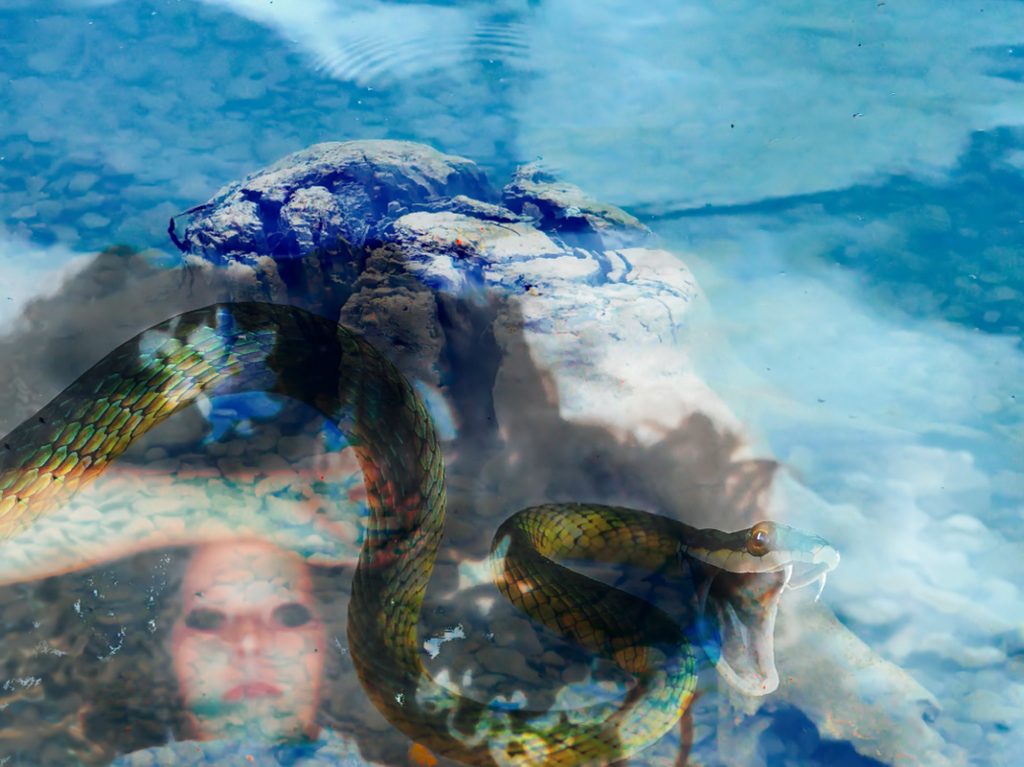Psychologist Erik Erikson broke human life up into several stages, each of which had an accompanying ‘crisis’ representing what the person would be focusing on and figuring out at that age.
I think the word ‘crisis’ has become overused, and I want to preserve the power of language by reserving it for the most major of events. So I’m aiming to get at what I believe is Erikson’s meaning: that at various stages of life we have different challenges, needs, and goals. Depending on our environment, what happens to us, and the choices we make, our lives can go in different directions.
Staggering describes the back and forth motion of a life journey: moving forward in some ways, backwards in others, and perhaps sideways at times!
The month’s submissions deal with various different ways things can go at various points of our lives.

Mark Young’s pieces stagger through various ideas: phrases on various topics, each incomplete, gel together not in linear ways, but according to the expected rhythm of the English language.
Joan Beebe shows a joyful small child at his or her birthday, smiling and opening presents. In the preface for his upcoming book, Arthur Crandon births a literal monster.
Daniel DeCulla’s multimedia fabulist piece shows us young girls, horses, and fruit flies in a slightly off-kilter way, but still with a fairy-tale aesthetic.
Mahbub’s poetry concerns our individual selves merging with, or forming part of, the larger wholes of nature or one’s country. Christopher Bernard reflects on the tarot card of The Tower, pondering whether we will follow destiny or the crowds around us.
Fabio Sassi renders clumps of wire taken from different angles as art, turning technology into an aesthetic object rather than just a means to create them. Meanwhile, Eric Nolan haunts us with innovation that lurches forward faster than our psyches can handle.

A. Iwasa writes of his hobo/activist/cultural creative travels, taking stock in a zine which we’ve excerpted as he continues to wander. Norman J. Olson wanders as well, later in life in retirement, still open to learning from new environments (this time the Everglades) although he has a clear sense of his identity and preferences.
Wayne Burke examines the sources of artistic and heroic inspiration through a protagonist embarrassed to admit he visits his local theater in search of drama, while the lives of people around him contain more tension than he realizes. Don McLellan’s short story explores the meaning of courage with hiker and soldier and transient vagabond protagonists who travel through rough wilderness country.
Leah Mueller sent us pieces on fate, memory, and compassion, grounded in specific people and places, particularly one fluid narrative of a woman’s remembering her youthful naivete and trust in people in rural Oregon.
K.C. Fontaine, asserts that if you can make it in the Windy City of Chicago, you can make it anywhere. And Chicago may just be the hometown that pulls you back once you have left.
Chimezie Ihekuna probes the difference between love and lust in his latest essay installment, and explains how the difference comes down to patience. Christian Garduno’s lyrical pieces, which I could see set to slow music and sung, speak of intense romantic attraction, passion, and commitment.
J.J. Campbell ruminates on whether he will remain forever single and alone, in terse prose without capital letters, as nondescript as the speaker feels he is without a partner.
Ahmad Al-Khatat depicts his inner despair, suggesting that his sorrow stems as much from the violence within his native Iraq and the dislocation he faces as an immigrant as from his psyche. Abigail George affirms that as a woman with bipolar syndrome who experienced abuse as a child, that she feels better having lived, and continuing to live, in the face of loss and despair, than if she had never lived at all, or ended her own life.
Temidayo Jacob also relates inner pain, showing their scars and talking of destruction, yet explaining how and why a person would respond in certain ways to inner pain.
Kerry Rawlinson’s artwork depicts the Zambian myth of the Chitapo monsters, creatures who resemble beautiful women and pull those on boats under water to drown and devour them. Rawlinson turns her examination of the myth inward to the human psyche, suggesting that the always-hungry Chitapo can remind us of addiction, grief, fear – various states of mind when we are obsessive and half-conscious.

In her monthly Book Periscope column, Elizabeth Hughes reviews Peggy Wheeler’s Chaco, The Splendid Extraordinary Life of Beautimus Potamus, and The Anam Glyphs. Through a ludicrous setting and a fantastical character, Wheeler questions and laughs at human high society from a safe distance.
Michael Agee writes of fathers: loving and kind fatherhood, absent fatherhood, wise fatherhood, dedicated fatherhood, cruel fatherhood, and spiritual, metaphorical fatherhood from the wisdom of past generations. Meanwhile, Olaseni Precious illustrates decades of political and financial corruption in Nigeria by rendering the country as a family, where the children learn destructive behavior from their parents.
Denis Emorine’s story brings death, beauty and love into stark contrast in the lives of its protagonists, and then shows how the concepts we prefer don’t always prevail. However, as in Colin James’ memorial piece about his friend Tony, who we are – funny, caring, irreverent – can live on after our deaths, when we continue with the good-natured pestering of our loved ones.

“Staggering Toward Maturity” is a great topic. Synchronized Chaos published a personal essay of mine related to the topic last Feb, “You Have to Get Lost Before You Can Be Found”. The essay grew into a book:
http://www.amazon.com/You-Have-Lost-Before-Found/dp/1696951860
Thank you, Synchronized Chaos.
Thanks for reaching out with the update, Jeff. Part of our mission @synchchaos is to springboard emerging writers. We’re happy you published your book!